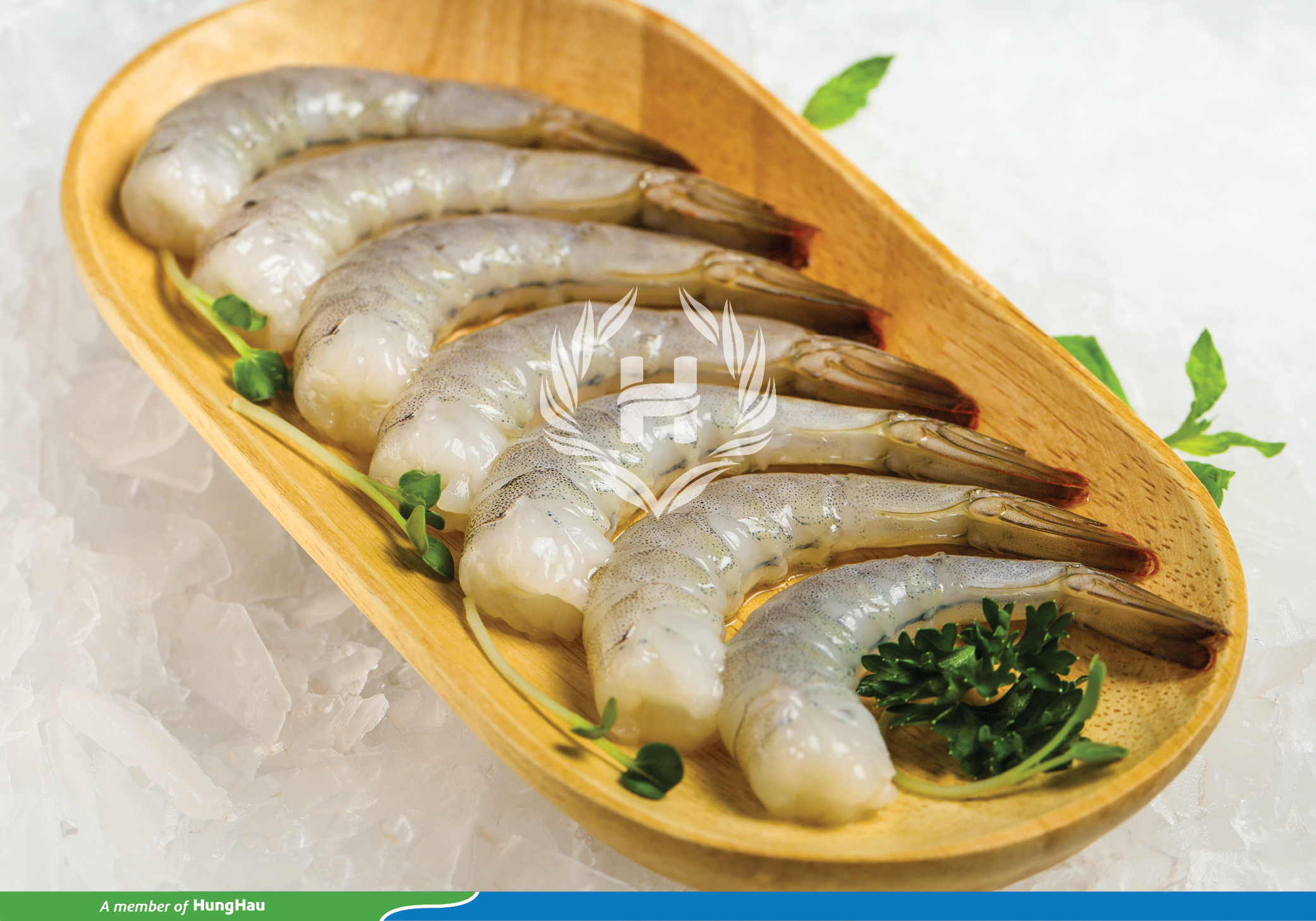Vietnam Seafood
Thirty-two disease-free shrimp production facilities nationwide
According to the Department of Animal Health, Vietnam currently has 32 disease-free shrimp production facilities nationwide, including 27 facilities with a post larvae capacity of 38 billion per year.
Unpredictable developments in shrimp disease outbreaks
According to the Department of Animal Health (Ministry of Agriculture and Rural Development), the nationwide brackish water shrimp farming sector suffered losses totaling 22,607 hectares in 2023. This figure represented approximately 89% of the total affected aquaculture area, and a decrease of 1.3% compared to the corresponding period in 2022.
Accordingly, extensive and improved extensive shrimp farming areas, as well as shrimp-rice integrated farming areas, suffered the most significant losses, totaling 15,820 hectares. The remaining affected area, which specialized in intensive and semi-intensive shrimp farming, amounted to 6,787 hectares.
Among the affected areas, 6,731 hectares were attributed to disease-related losses; 922 hectares were attributed to undetermined causes; and 14,954 hectares were attributed to climate change and weather fluctuations, with the majority of the damages located in extensive shrimp farming areas in Ca Mau province.
In the first three months of 2024, approximately 541 hectares of aquaculture areas nationwide were affected by disease, with brackish water shrimp farming area suffering the most substantial losses, marking a decrease of 29.5% compared to the corresponding period in 2023. Notably, over 474 hectares of shrimp farming area, spanning across eight provinces and cities, were affected by the white spot syndrome virus.
According to Mr. Nguyen Ngoc Tien, Head of the Aquatic Animal Health Division at the Department of Animal Health, acute hepatopancreatic necrosis disease (AHPND) is one of the most damaging factors in shrimp farming. In 2023, AHPND occurred in 125 communes across 46 districts and towns in 19 provinces and cities nationwide, affecting a total shrimp farming area of over 1,324 hectares.
The largest AHPND-affected shrimp farming areas are located in Tra Vinh province with nearly 416 hectares, Soc Trang province with nearly 325 hectares, and Bac Lieu province with over 278 hectares.
During the first three months of 2024, acute hepatopancreatic necrosis disease continued to occur in 40 communes across 13 districts and towns in 6 provinces and cities, affecting a total shrimp farming area of 90 hectares. This figure marks an increase of 17% in scope but a decrease of 46.5% in area compared to the corresponding period in 2023. Tra Vinh province continued to house the largest affected area with over 34 hectares.
“Monitoring results revealed that the AHPND bacteria are found in abundance in shrimp seeds, live feeds, and water environments. Consequently, in order to prevent AHPND in shrimp, farmers must employ strict biosecurity measures and control inputs such as shrimp seeds and live feeds. Applying detoxification and disinfection measures to the water environment, especially pond water, and treating bottom sludge are also crucial.
Furthermore, intermediate hosts are also carriers of the disease-causing bacteria, so farmers need to thoroughly control and prevent their presence in ponds. Local governments that effectively monitored disease outbreaks and controlled shrimp seeds have reported fewer disease samples,” advised Mr. Nguyen Ngoc Tien.
Establishing disease-free production facilities
In response to the unpredictable development of disease outbreaks in shrimp farming, the Department of Animal Health has instructed and urged local governments to establish disease-free facilities in accordance with Circular No. 24/2022/TT-BNNPTNT and other regulations from the Ministry of Agriculture and Rural Development.
On the other hand, the Department of Animal Health will directly assist shrimp farming facilities in establishing disease-free facilities in compliance with Vietnam’s and OIE/WOAH regulations to support export activities. Additionally, the Department will deploy technical officers to assist in surveys and guide businesses in developing biosafety plans and disease monitoring.

In 2023, the Department of Animal Health provided technical guidance, organized inspections, evaluations, and recognized 5 disease-free production facilities, including Viet Uc Seafood Joint Stock Company in Binh Thuan and Ninh Thuan, Viet Uc Seafood Joint Stock Company in Bac Lieu, Trung Son Food Joint Stock Company in Kien Giang, and Dac Loc Aquatic Products Co., Ltd. in Phu Yen.
Notably, Ninh Thuan province’s Sub-Department of Livestock Production and Animal Health guided, monitored, evaluated, and recognized 5 disease-free aquatic seed production facilities in 2023, thereby increasing the number of certified disease-free aquaculture facilities in the province to 13.
However, according to Mr. Phan Dinh Thinh, General Director of the Ninh Thuan province’s Sub-Department of Livestock Production and Animal Health, only 9 out of the 13 local aquaculture facilities are currently complying with disease-free requirements. The remaining 4 facilities have ceased operations for various reasons.
“Shrimp seed yield from certified disease-free facilities currently accounts for 25% of the province’s total shrimp seed yield, which can meet the increasing demand of the market,” Mr. Thinh stated.
According to the Department of Animal Health, Vietnam currently has 32 disease-free shrimp production facilities, which include 27 facilities with a post larvae capacity of 38 billion per year, and 5 commercial shrimp farming facilities. Specialized veterinary management agencies are currently coordinating with local businesses to expedite the establishment of disease-safe facilities, and actively monitor disease outbreaks in compliance with regulations.
“In 2024, the Department of Animal Health will continue to support local governments in establishing disease-free aquaculture facilities, with a focus on developing shrimp seed production facilities in compliance with the regulations on disease-free facilities and zones as set by the Ministry of Agriculture and Rural Development.
We will also continue to implement disease monitoring programs for shrimp exports and support the establishment of disease-free facilities in accordance with the national aquatic animal disease prevention and control plan for the years between 2022 and 2025. This plan consists of two main components: providing technical guidance during the establishment of disease-free facilities, and conducting training sessions on the establishment of disease-free facilities,” added Mr. Nguyen Ngoc Tien.
(Source: https://vietfishmagazine.com/)



 Tiếng Việt
Tiếng Việt